What goes in each bin?
UQ aims to maximise recycling and re-use on campus, and minimse waste sent to landfill. We invite every single member of the UQ community to join us in this commitment.
We have numerous waste reduction initiatives that you can be part of, including our Green Office Program, our BYO coffee cup and water bottle drive, our clean-up events throughout the year, and many more.
But one of the best ways that you can help is to simply put the right items in the right bins.
For 'special' items (such as e-waste, old glasses, batteries and so on), you can also visit our Reuse and Recycling Stations at St Lucia and Gatton.
Or, follow our guide below or check out the signs around campus!
Recycling
Recycling goes into the bin with the yellow signage.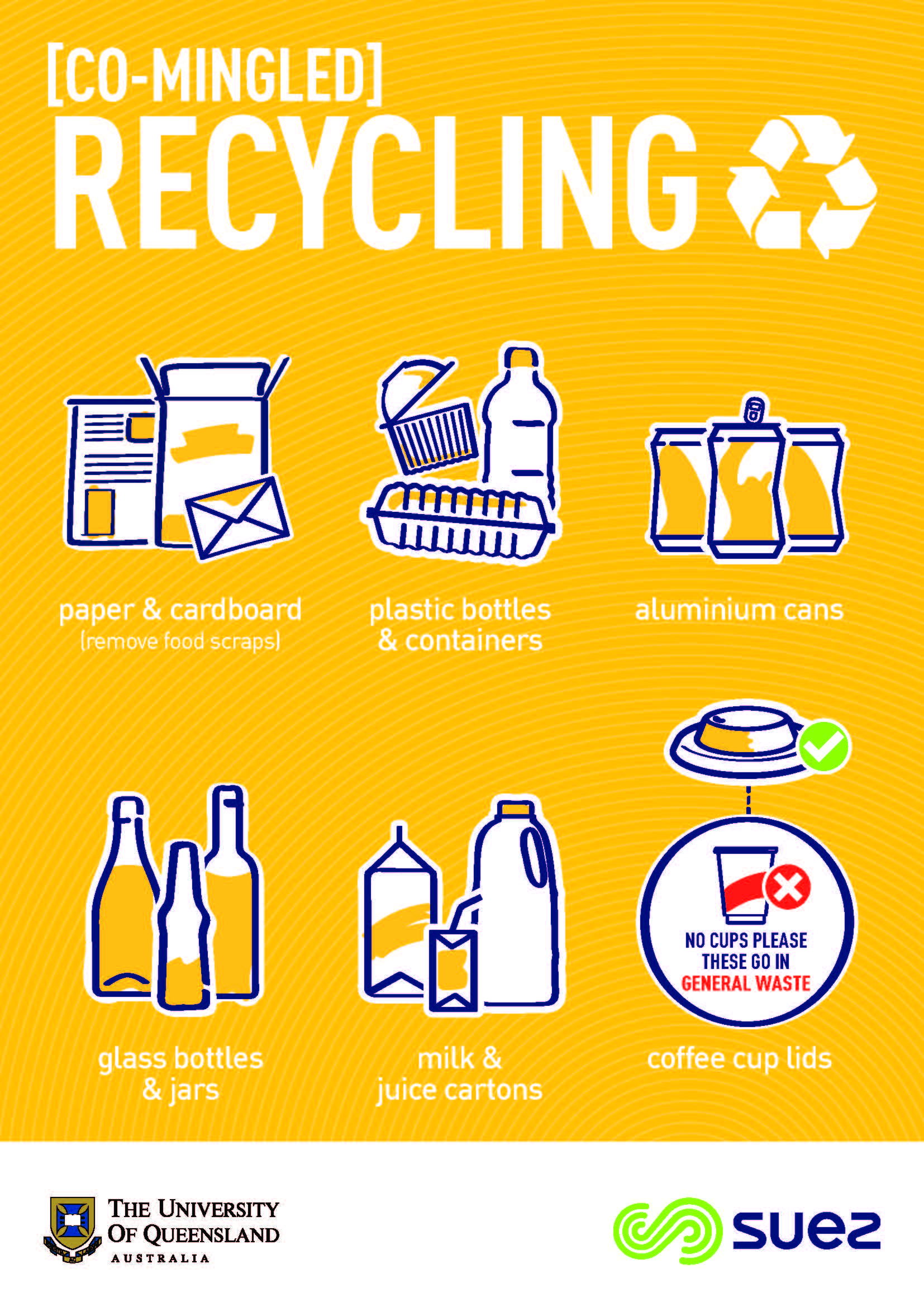
What goes in this bin?
- plastic bottles and containers (including yoghurt and takeaway containers)
- glass bottles and jars
- milk and juice cartons
- disposable coffee cup lids
- paper and cardboard (these should preferably be placed into the paper and cardboard stream, where available).
Where do we send our recycling?
These are taken off site for segregation at a materials recycling facility. There, they are placed in a sorting line, and each type (plastic bottles, cardboard) is segregated out and then bulked up. Once enough of these items have been collected, they are sent to manufacturers for reprocessing.
General waste (landfill)
General waste goes into the bin with the red signage.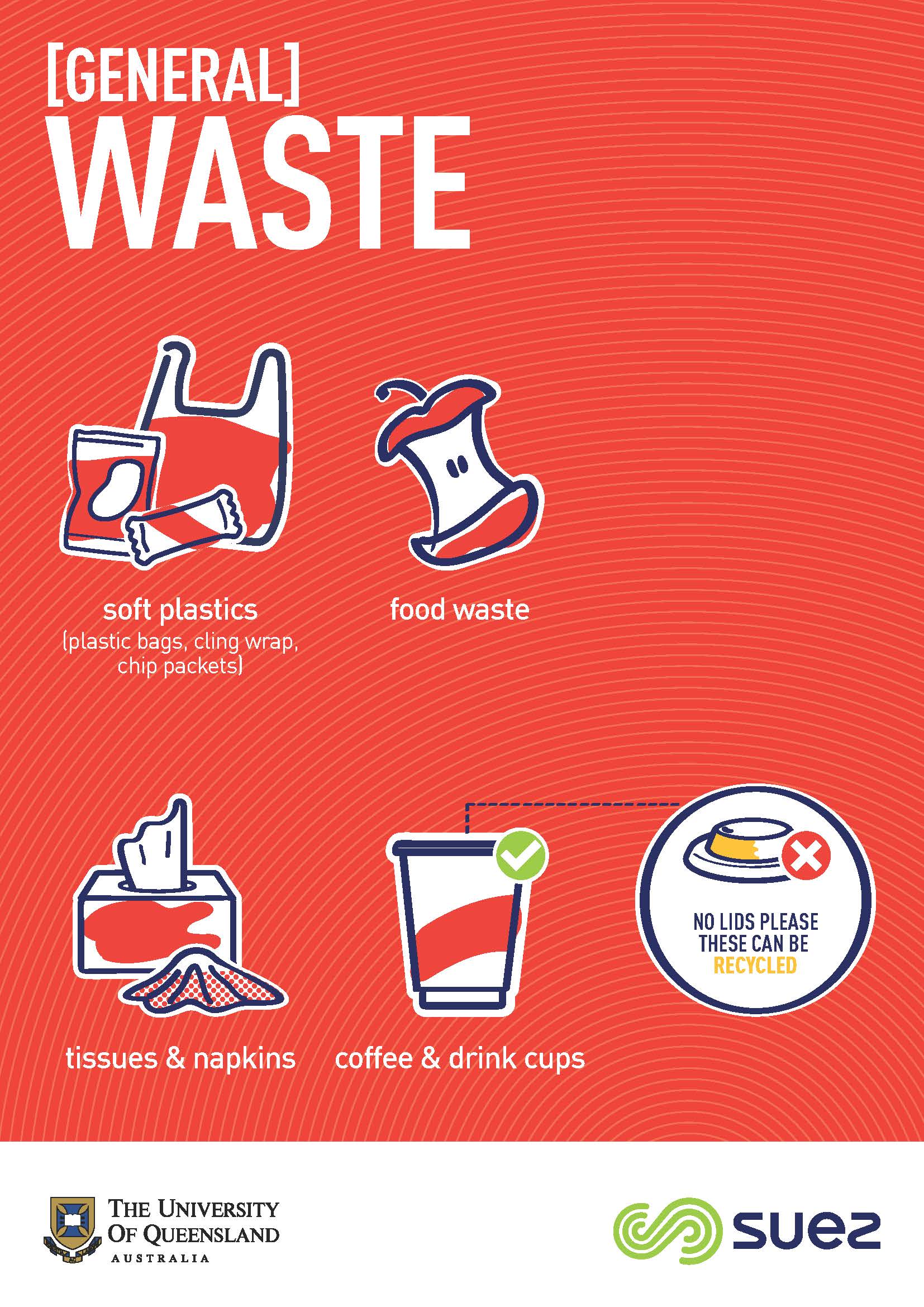
What goes in this bin?
- styrofoam cups and containers
- pens and pencils
- tissues, napkins and paper towels
- food waste
- disposable utensils and straws
- plastic bags, packaging and wrappers
- disposable coffee cups
Where do we send our rubbish?
The general waste stream is collected by our waste contractor and compacted before being transferred to an engineered landfill site. Engineered landfill sites generate power using the methane created by the decomposing waste.
Organics
Organics go into the bin with the green signage.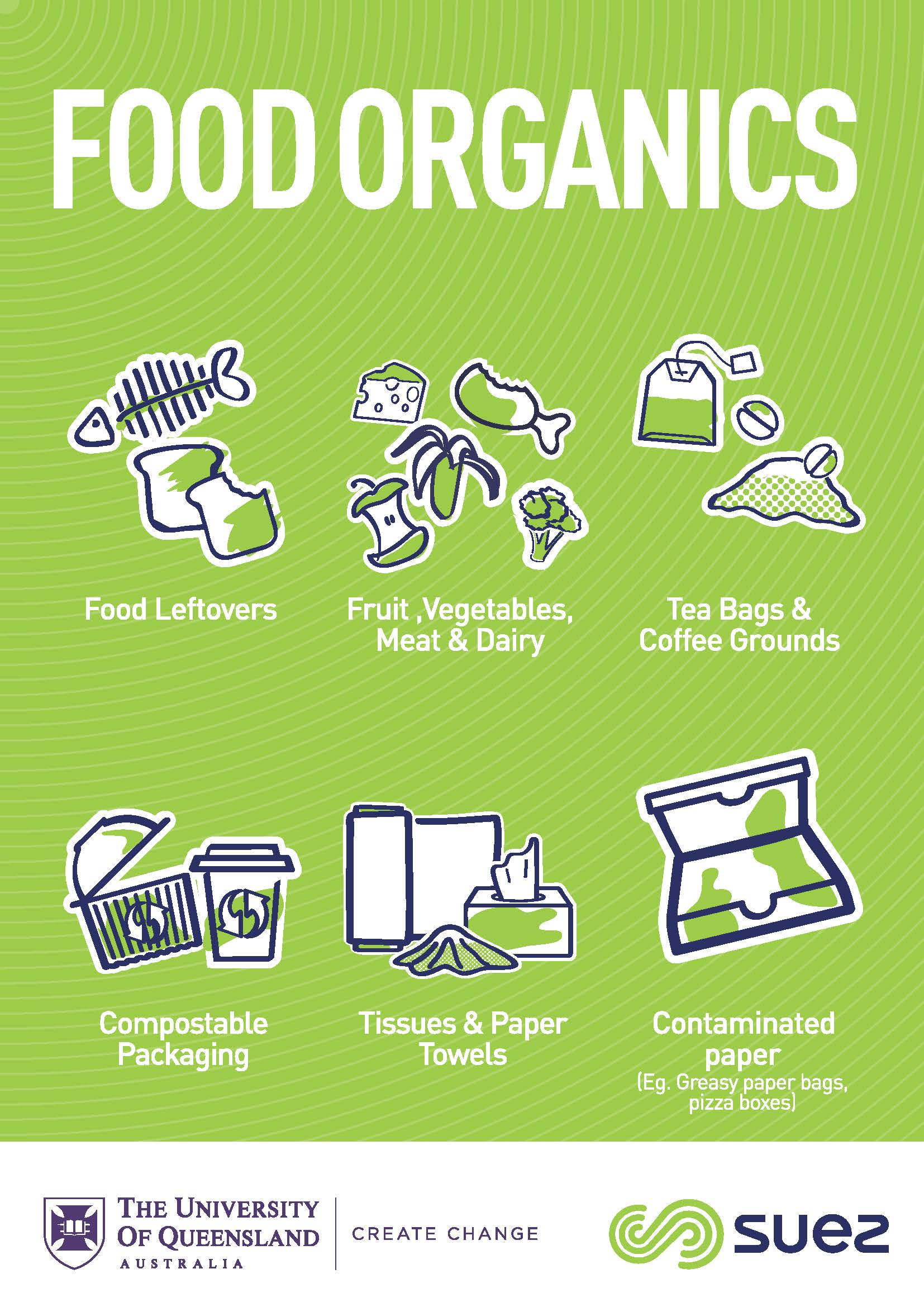
What goes in this bin?
- Food scraps (fruit, vegetables and meat)
- Coffee grounds and teabags
- Flowers and plants
- Tissues/paper towels
- Compostable packaging
Where do we send our organics?
Organic waste is collected and delivered to an organic resource recovery facility for processing, where the waste is converted into compost, soil conditioner and mulch products.
Drink containers
Drink containers go into the bin with the blue signage.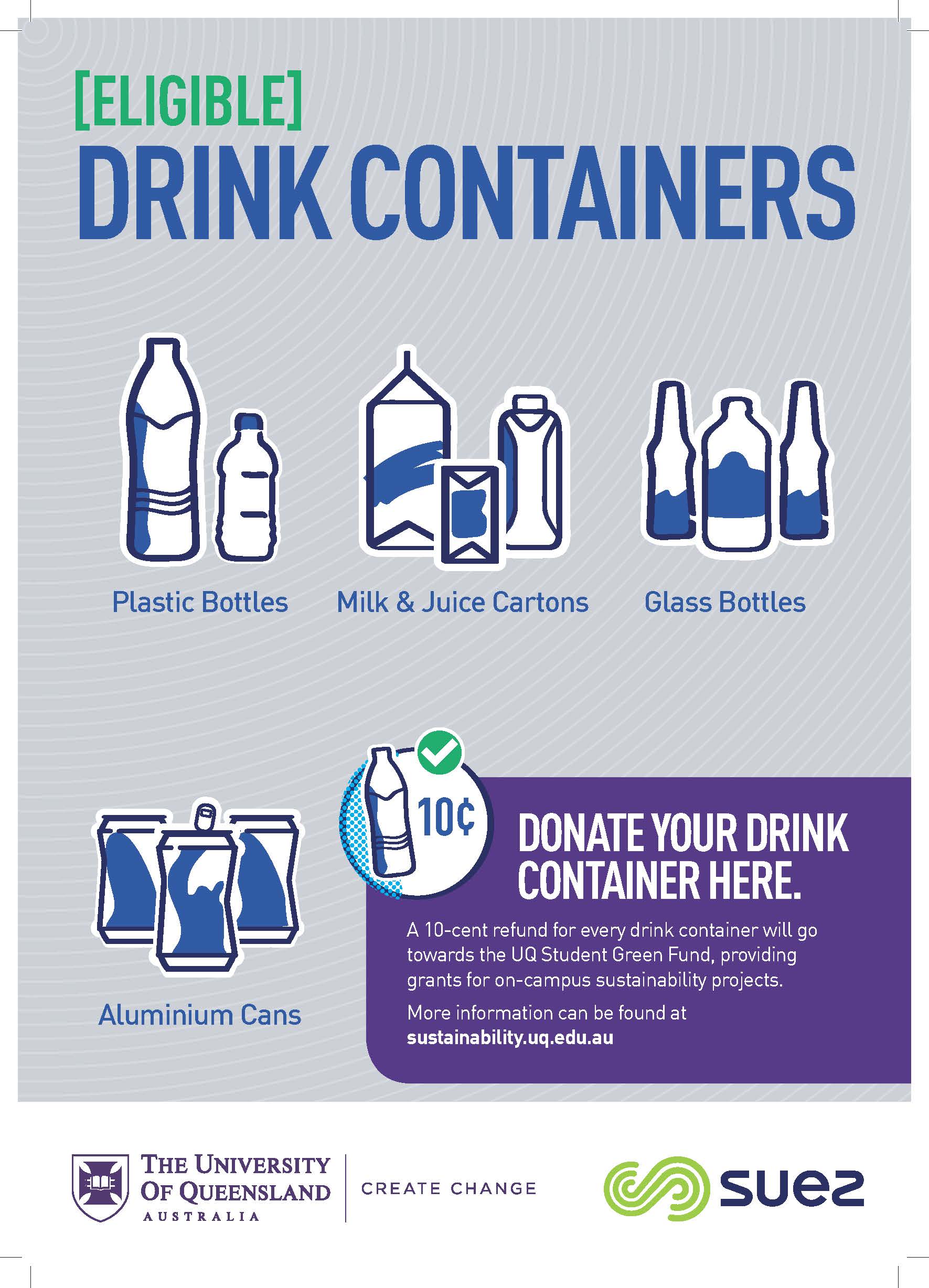
What goes in this bin?
Empty 150 mL to 3 L beverage containers including:
- Plastic bottles
- Milk and juice cartons
- Glass bottles
- Aluminium cans
Where do we send our drink containers?
The containers are collected by our waste contractor and sold to recycling companies.
A 10-cent refund for every drink container will go towards the UQ Student Green Fund, providing grants for on-campus sustainability projects.
Paper waste
What goes in this bin?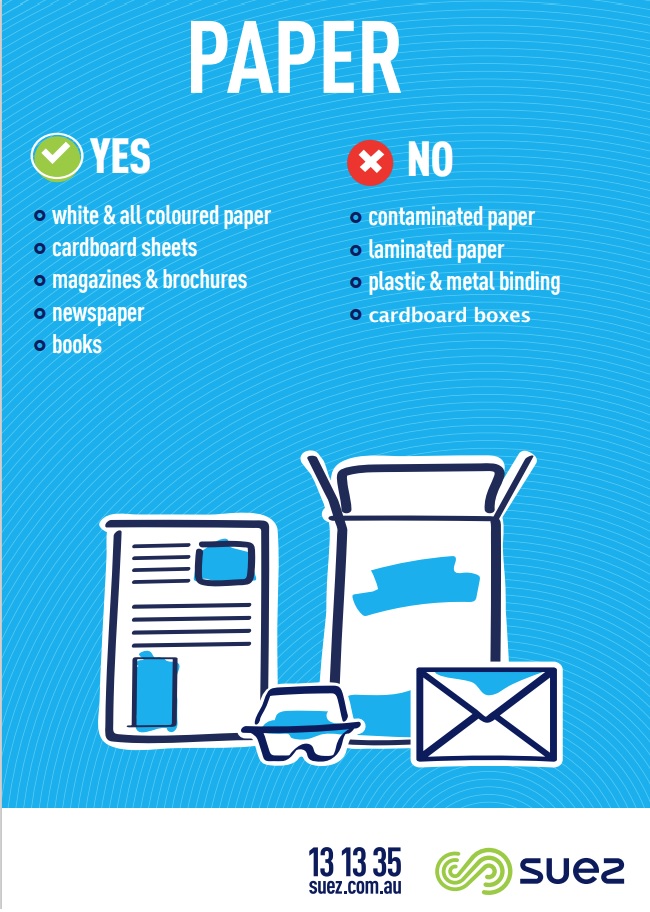
- Clean or printed paper (no need to remove staples)
- White, coloured and glossy paper
- Magazines, newspapers and books
- Envelopes (including those with plastic windows)
Staff
Place paper waste into the dedicated paper recycling wheelie bins in your building. In office areas, under-desk paper recycling boxes are available for collecting paper waste. If paper recycling wheelie bins are not available, use the comingled recycling bins.
Students
Where do we send our paper waste?
Paper waste is collected by our waste contractor and taken to a resource materials recycling facility, where it is screened, decontaminated, sorted and baled. The baled material is then sent to paper processors to be made into recycled paper and cardboard products.
The paper recycling poster can be found here.
Cardboard
Flatten cardboard waste and place it:
- At the designated collection point in your building for collection.
- In the cardboard skip bins located around campus.
Where these are not available, use the co-mingled recycling bins.
Where do we send our cardboard waste?
Cardboard waste is collected by our waste contractor and taken to a resource materials recycling facility, where it is screened, decontaminated, sorted and baled. The baled material is then sent to paper processors to be made into recycled paper and cardboard products.
The cardboard recycling poster can be found here.
Mobile phones
Staff
UQ staff can recycle mobile phone handsets, batteries and accessories through our mobile phone recycling program
Students
Drop them off at over 3500 public drop off points. Check out Planet Ark website for drop off locations.
Batteries
Batteries contain dangerous heavy metals that can contaminate soils and waterways if sent to landfill.
Staff
Χ Never place hot or smoking batteries into internal mail or any bin (i.e. there is a perceived risk of fire or explosion). Call UQ Security at x53333 or 3365 3333 instead.
Χ When batteries are ready for recycling, separate different battery types to reduce risk of fire and explosion
Χ Staff members should place used batteries for recycling into internal mail.
- Place tape over the terminals
- Place batteries into a clear snap lock bag no more than half full.
- Address to: Batteries for recycling, UQ Mailroom
Χ Minimise the quantity of batteries being stored and collected by sending batteries for recycling more often.
For large quantities of batteries or large sized batteries, UQ Mailroom can arrange collection, on ph. 3365 2026 or email: store@pf.uq.edu.au
Students
Aldi supermarkets offer a free battery recycling service at all their Australian stores. Find a collection point near you using Australia’s official battery stewardship scheme – B-cycle (bcycle.com.au).
Where do we send our batteries?
Batteries are collected by our waste contractor and delivered to a local recycling facility. The recycling facility processes nickel-cadmium batteries, and all other battery types are exported for processing. Materials such as cobalt, lithium, cadmium and nickel are recovered for re-use.
E-waste
What goes in this bin?
E-waste refers to electronic appliances that are no longer functional or are obsolete, such as: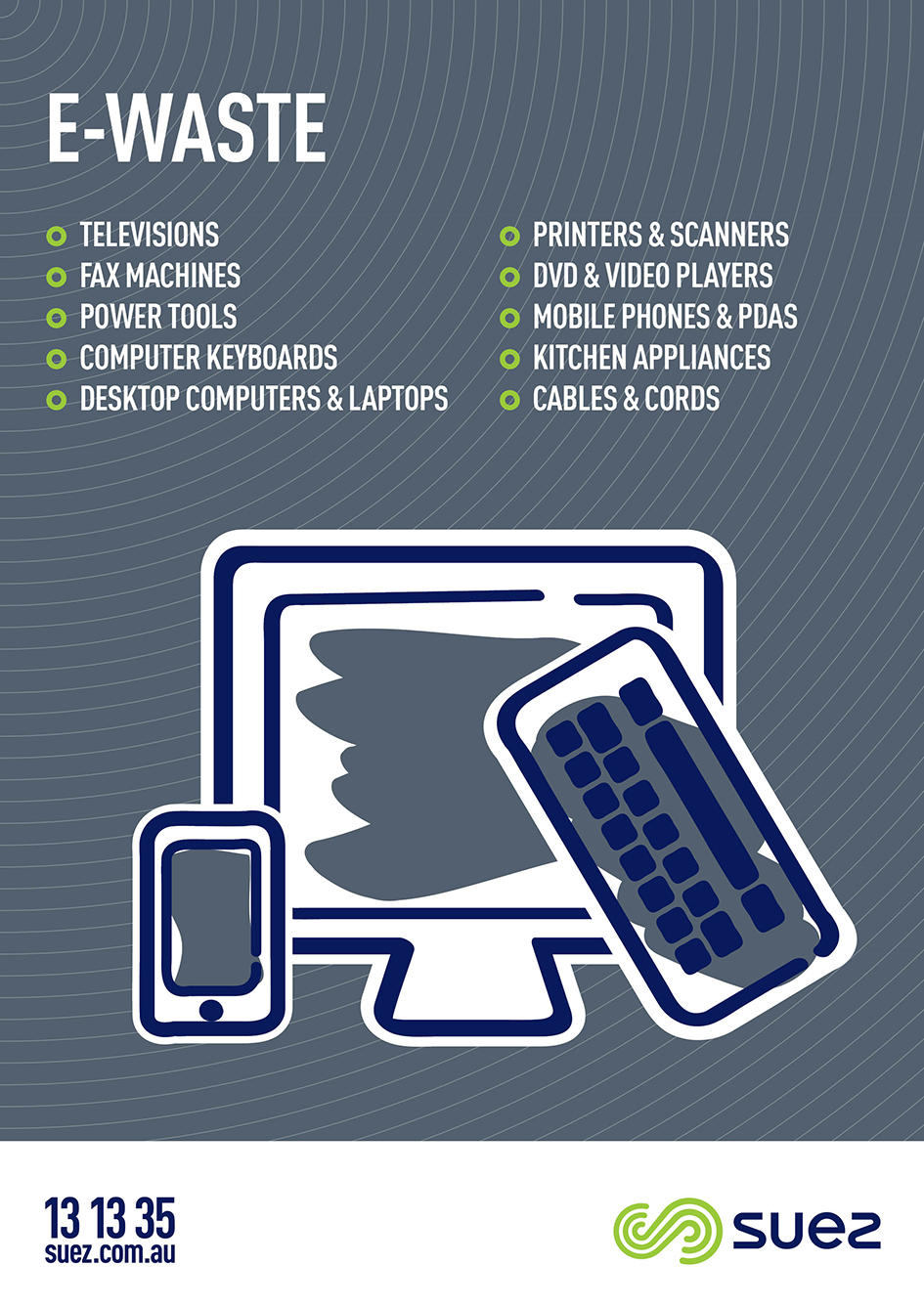
- Televisions
- Computers
- Photocopiers
- Printers
- DVDs and CDs
Staff
- All data is erased from equipment
- Toner cartridges are removed from printers.
The E-Waste recycling poster can be found here.
Students
Check out the Planet Ark website for drop off locations.
Where do we send our E-waste?
E-waste is collected by our waste contractor and delivered to a local recycling facility, where it is disassembled into individual components and recovered for reprocessing.
Soft plastic
Soft plastic includes any plastic that can be easily scrunched into a ball, including: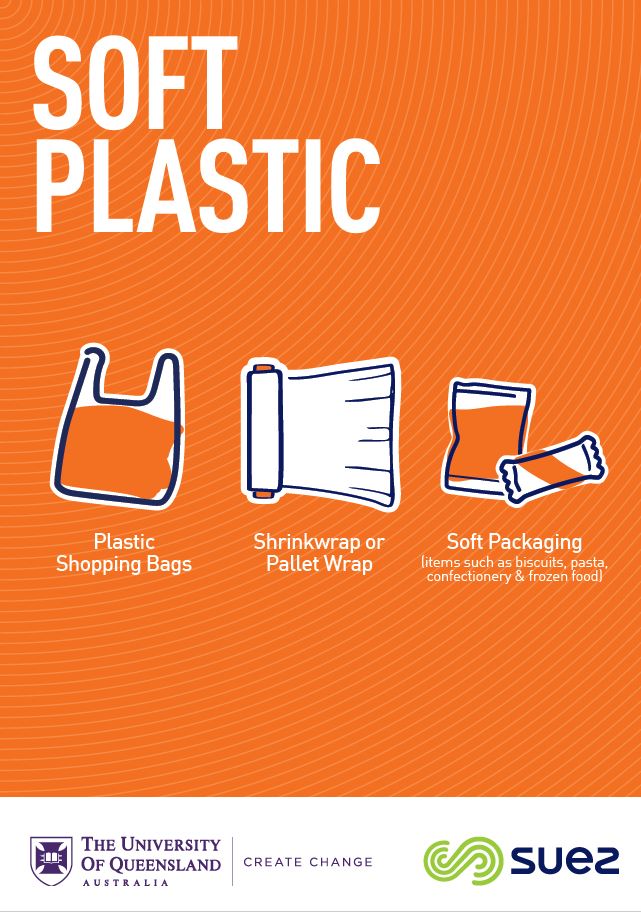
- Plastic shopping bags
- Shrink wrap or pallet wrap
- Packaging such as biscuit packet wrappers, pasta bags, bread or cereal bags
If paper labels are smaller than an A5 page, these can be left on the packaging. Small amounts of paper won't affect the recycling process. Larger labels should be removed if possible.
Staff
Place soft plastic waste generated on campus into the dedicated soft plastic recycling bin in your building.
The soft plastic recycling poster can be found here.
Students
Soft plastic waste generated on campus can be dropped at the Reuse & Recycling Station.
To reduce contamination and maintain our recycling processes, please:
- only dispose of soft plastics waste generated on campus,
- do not dispose of domestic waste from home.
Where do we send our soft plastic?
Soft plastic is collected by our waste contractor and delivered to a recycling facility, where it is baled and reprocessed into products such as irrigation piping and wheelie bins.
Furniture and office supplies
Unwanted furniture items are listed on WARPit, an online tool that allows UQ staff to swap resources internally. If these items are not claimed, they are donated to local charities.
Items posted on WARPit can include:
- furniture
- unused stationery
- office supplies or equipment
- printer consumables
- lab equipment
Broken furniture or items that can’t be re-used should be transferred to the council recycling depot by the UQ removalist contractor.
Toner and inkjet cartridges
Staff
Send empty cartridges in a sealed container via internal mail to Property and Facilities Central Store, Glasshouse Road, St Lucia campus.
Students
Check out Cartridges 4 Planet Ark to find your closest collection point.
Where do we send our empty cartridges?
The plastic casings of the empty cartridges are re-manufactured into new cartridges. Any casings that are not suitable for re-use are then broken down to material type (such as plastic and metal) and recycled to base materials.
Make sure you purchase re-manufactured cartridges for use in your printers.
The toner and inkjet cartridges recycling poster can be found here
Polystyrene
Polystyrene is a type of plastic derived from styrofoam or expanded polystyrene. Polystyrene items can be found in coat hangers, DVD cases, disposable cups and protective packaging (the white peanuts).
Staff
Store this material until you have at least enough to fill one shopping bag or box, and then log a ‘waste’ request in ARCHIBUS to arrange collection.
The polystyrene recycling poster can be found here.
Students
Check out Cartridges 4 Planet Ark to find your closest collection facility.
Where do we send our empty polystyrene waste?
Polystyrene is collected by our waste contractor and delivered to a recycling facility, where it is melted down and recycled to create plastic products such as electronics and toys.
Corflute signs
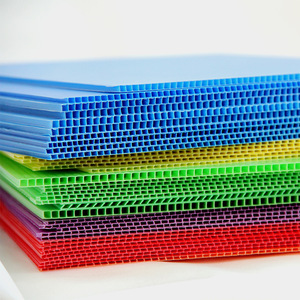 Fluteboard and Corflute materials are often used for printing temporary event signage for both indoor and outdoor displays. These materials contaminated mixed recycling bins and do not break down in landfill. However, through a specialised separate collection they can be recycled.
Fluteboard and Corflute materials are often used for printing temporary event signage for both indoor and outdoor displays. These materials contaminated mixed recycling bins and do not break down in landfill. However, through a specialised separate collection they can be recycled.
To recycle:
Log a ‘waste’ request in ARCHIBUS to arrange collection.
Ensure:
- Eyelets are removed
- Oversize corflutes are cut down to A1 size
Where do we send our Corflute signs?
Material is sent to a local processing facility where it is re-manufactured into refreshed boards for new sign printing.
Scrap metal
Staff
- Log a ‘waste’ request in ARCHIBUS to arrange collection.
- Place in metal skip bins located around campus.
Students
- Scrap metal can be taken to your local resource recovery centre for recycling or delivered to scrap metal dealers.
Where do we send our scrap metal waste?
Scrap metal is collected by our waste contractor and taken to a recycling facility. Scrap metal recycling works by melting the same types of metal material together, before removing any impurities, and creating a new metal product. Almost all metals, such as steel, copper, and aluminium, can be used again and again, without any deterioration to its quality or durability.
